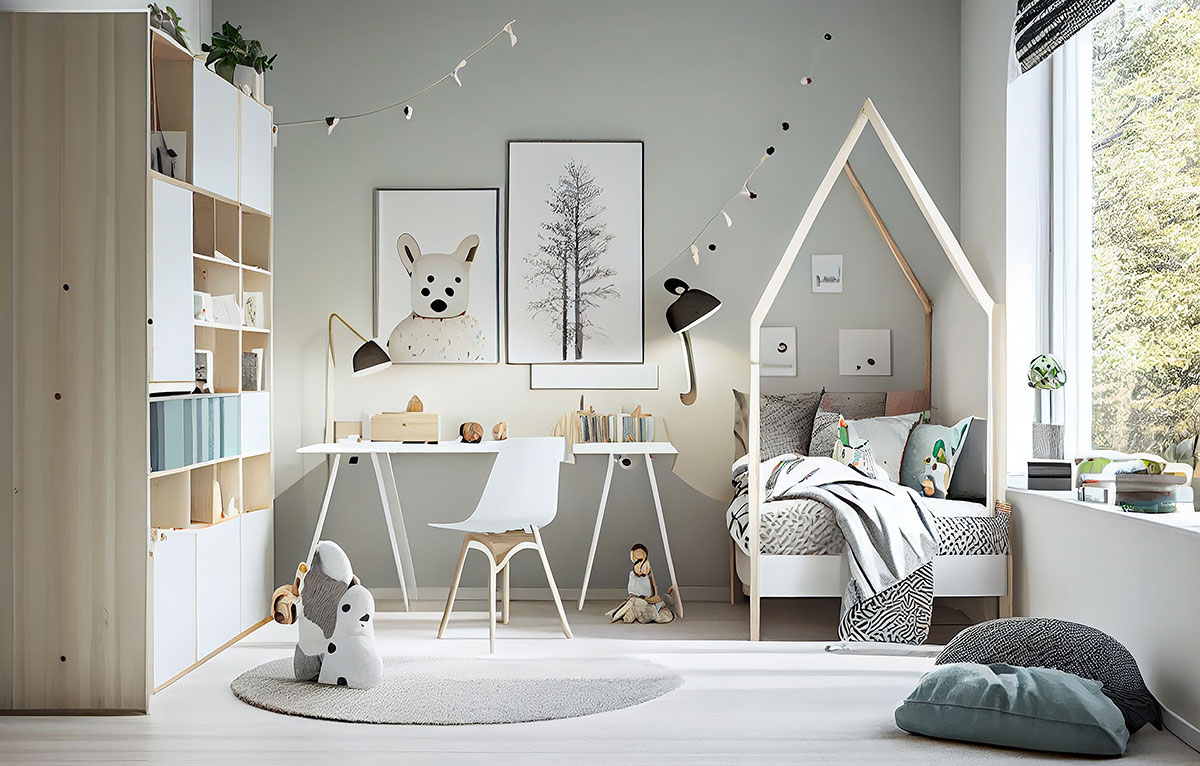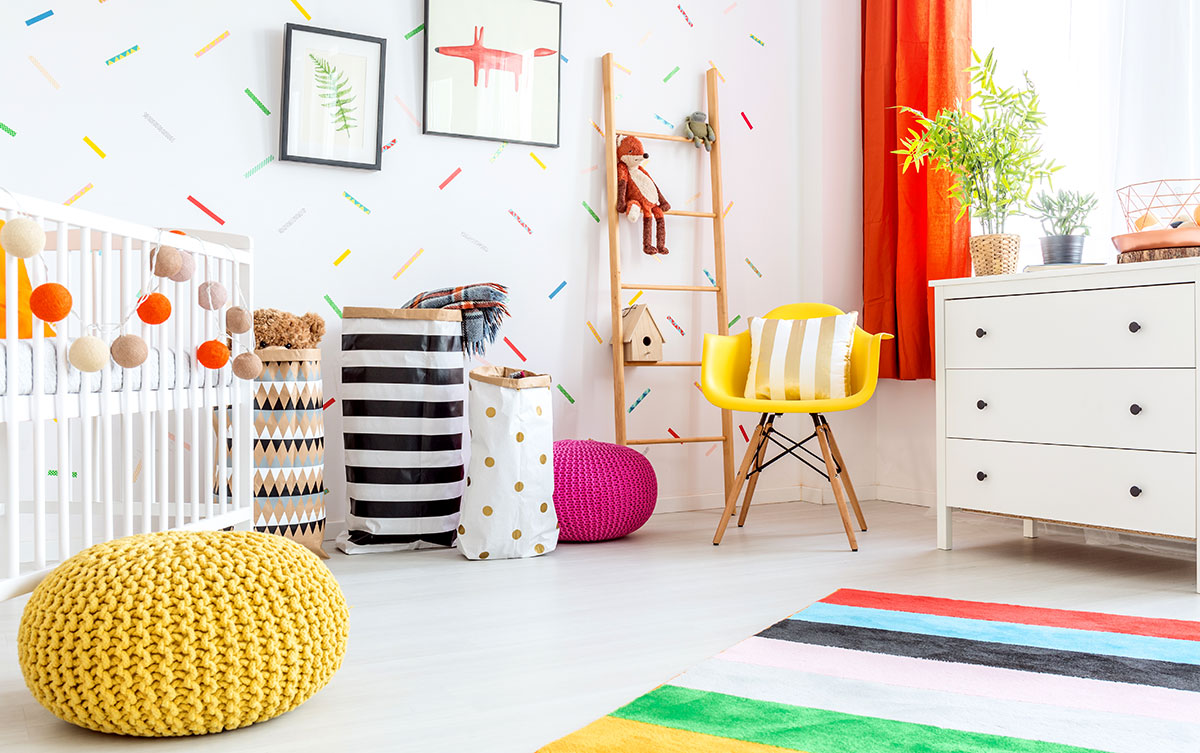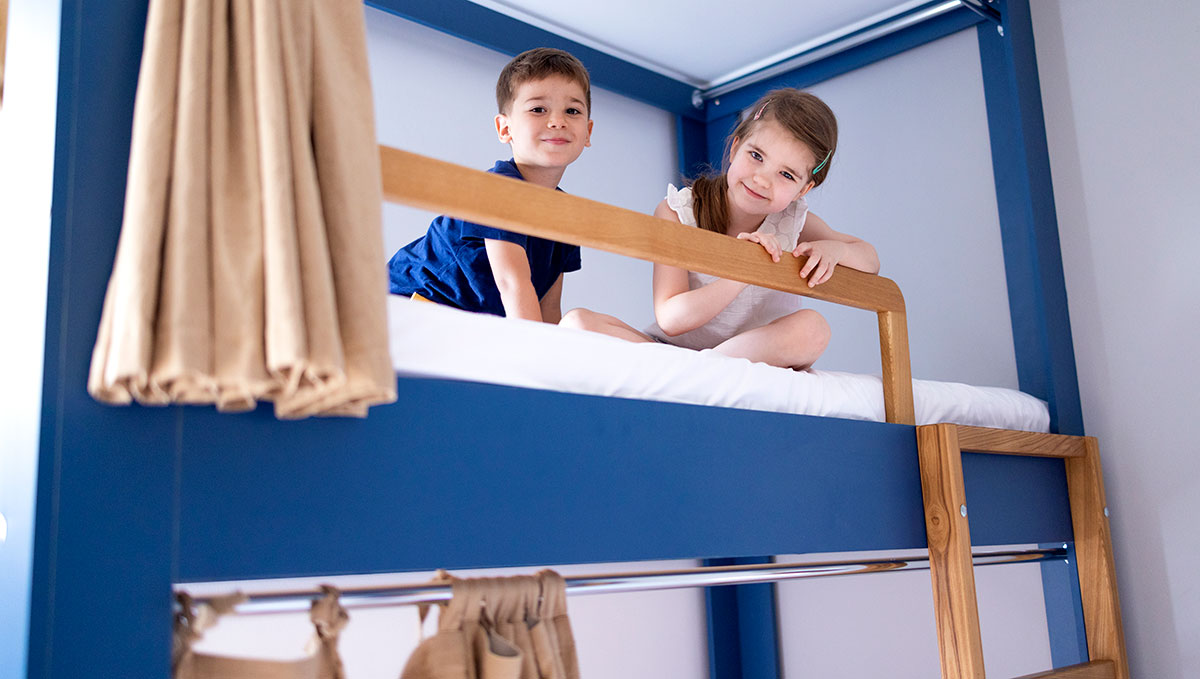
At first glance, designing a child’s room seems like a simple task that doesn’t require much thought. But a child’s bedroom can actually affect their mood and psychological development. For example, morning sunlight exposure can help prevent circadian rhythm problems in the long run. Meanwhile, the inclusion of a space for hobbies — such as reading corners — can help build a child’s sense of identity.
Design trends may change, but the principles that guide a child’s proper development do not. As a property owner, adopting these principles can make your space more attractive to those who are renting with kids. Given that data from Assurant reveals that 20% of all renters are families, mindfully designing children’s spaces can broaden your pool of renters and ensure interested parties that their kids will develop happily and healthily on your property.
Pick Bright and Contrasting Colors
Research explains that children can connect the color yellow with happy facial expressions by three years of age. The study also found that children associate the color blue with sad facial expressions. Creating these connections is vital as it helps stimulate children’s emotional, cognitive, and linguistic development. This is harder to do when a child’s room is mostly neutrals, as there is less to spark their imagination and creativity.
Understandably, since you may want to keep a space flexible enough for renters to decorate it themselves, you don’t need to go overboard and paint entire rooms. Instead, introduce small decorative items in varying shades to provide colorful contrast. Get creative with a clock in the design of a sun, ceiling lights in the shape of stars, or even a playful dresser!

Create Cozy Nooks for Personal Time
The last few years of staying at home have created a new generation of children who need space that helps them “truly rest, process, and hide from the world.” Samantha Struck of StruckSured Interiors describes a need for smaller, safe spaces that can be built with elements such as hammocks, bunk beds that can be closed with curtains, and bed canopies. This reinforces feelings of security and helps kids better understand how to regulate their emotions without being overwhelmed.
Having these personal spaces can also encourage children to pursue their own interests. Passion projects, whether that be something simple like reading a short story or something more advanced like toying with an app, are important activities for children. These can help them identify their personal outlets and allow them to develop a sense of responsibility. As such, dedicated nooks can be a place of safety and creativity.

Opt for Hidden Storage
The minimalist trend has been growing as more homeowners recognize the relationship between a clutter-free space and good mental health. This can be implemented in children’s rooms by opting for hidden storage to keep any clutter, such as toys or blankets.
This can be anything from an additional shelf under the bed or an extra cabinet built behind the wall. Building storage into a room design also encourages accountability among children, who could become more motivated to tidy up after playtime. For older children, more streamlined storage also allows them more space to personalize their rooms down the line, leading to more satisfied renters.